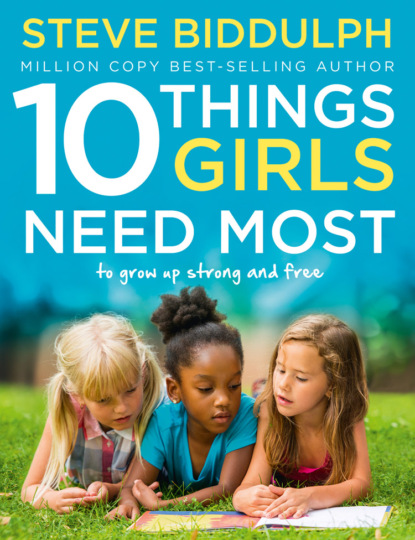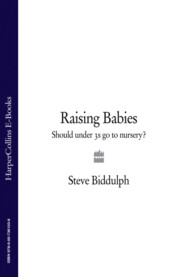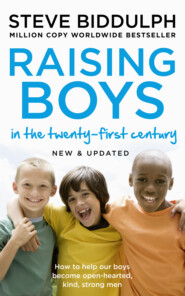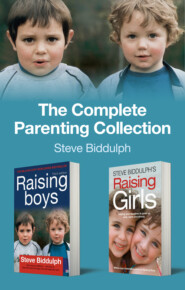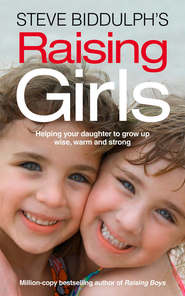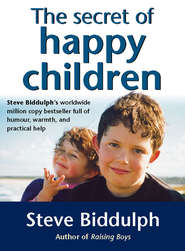По всем вопросам обращайтесь на: info@litportal.ru
(©) 2003-2024.
✖
10 Things Girls Need Most: To grow up strong and free
Автор
Год написания книги
2018
Настройки чтения
Размер шрифта
Высота строк
Поля
Jasmine, 37
Can you see how, added together, these experiences might immunize her – even just a little – against the stupidities of social media or putting on make-up and fretting about being hot enough for boys?. From being cruel to friends. From needing to take drugs to feel good at fifteen.
And of course, the best wilding she can receive she learns from you, her mum and dad. If you demonstrate a free and exuberant nature, laugh, sing, dance, love nature, love music, love life, then she will just catch that as naturally as breathing. She will see a competent, caring, protective person, who is nonetheless unfettered, unconventional, untamed. Who takes joy in the moment and draws her out of reticence into exuberance.
THE VERY HELPFUL ROLE OF DADS
Dads have proven to be very valuable in helping girls be explorers. It’s known from research that dads do more adventurous, active and physical kinds of play with girls than mothers do. They take children to wild outdoor settings and participate in riskier activities (and have more accidents, so do be sensible). Daughters with dads get knocked over by waves at the beach, graze their knees, wrestle, run and climb things far more. They go fishing. Dad is slightly less aware of mealtimes or having a balanced lunch! Within reason this can result in girls being more stress-resistant and hardy. But better still, they will be comfortable in male company, able to meet boys on their own terms. So dads – do stuff with your girls! (There’s a whole chapter about this later in the book.)
Keeping Out the Hyenas
It’s incredible how aware small children are of the world around them. So we have to be alert about the media that floods into our homes – television, the internet and magazines, as well as the advertising they see everywhere in the street, in shop windows and shopping malls. Advertising can accidentally impact our girls or be very deliberately targeted at them. In either case, its message is almost always harmful to their emotional wellbeing and self-image. We can choose what we let into our homes, and as they get older we can equip our girls to see what is being directed at them. We can fence out the hyenas until they learn how to fight them themselves.
“When she was barely three, our daughter was playing on the carpet in front of the TV. We were in that half-daze of early evening, sitting chatting about something, when her voice rang out loud and clear. She had raised her head and was looking at the TV.
‘Isn’t that nice! That lady’s husband will love her now she is thin.’ My wife and I almost levitated in our rush to turn off the TV, while also looking casual and relaxed. The ‘errkkk’ feeling was so strong. Australian TV has ads – I am sure the UK does as well – for diet products that show vivid before and after footage of chubby people suddenly grown thin and happy. Our toddler had taken in every word.
Love = thin.
Woman = decoration.
Marriage = goal in life. Aaaargghhh!”
June, 33, and Daniel, 33
“Selecting an outfit for the day ahead. Little Miss Two was at my side as usual, watching my every move. I chose my super-slimming high-rise black jeans, the ones that take a fair bit of jiggling to get on. It’s about then that I notice my little blonde-haired girl waving her rear-end at the mirror. She’s peering over her shoulder, gawking at her nappy-cushioned bottom, just like I do. The good old ‘Does my bum look big in this?’ move. I was shocked. I could’ve cried.”
Claire, 39
About fifteen years ago the corporate world discovered girls. Marketers realized there was an untapped demographic that was the softest target in the world. Large corporations routinely hire child psychologists who advise them on better ways to exploit and, if need be, harm children. Yes, big tobacco, big alcohol, and today’s equally conscience-challenged corporates all had psychologists to help them. And it all ramped up with science behind it. In Third World countries, they dress mid-teen kids in smart clothes and expensive-looking trainers, and these kids give out cigarettes to other kids for free. And they don’t worry about low tar. Just last year, in Australia, a wine company released a fizzy red drink in plastic bottles with little hearts printed on the label. And 8 per cent alcohol. Luckily alcohol products aimed specifically at the young are now illegal, and this new product was quickly withdrawn. (But it took us almost twenty years to get those laws passed.)
By the early 2000s it really got serious. What these hired experts told the companies was that girls are different to boys in an important way. They are wired for social cueing. If two girls are friends in primary school and one of them frowns or scowls, the other one will worry about it all day. If two boys are friends, they will sometimes have a big fight – blood will flow – and in minutes it will be all over! Boys forget. Or more to the point, they barely notice in the first place. We have to teach our boys to be aware of other people’s feelings. Most girls think about them all the time.
With this information, and some other insights I am not going to tell you, the advertisers focused millions of marketing dollars onto a new target – the pre-teen girl. In fact it was advertisers who invented the ‘pre-teen girl’. As if being eleven is only about waiting to be a teenager, and not a worthwhile age on its own. (Children are not pre-anything. They are who they are, and should be allowed to be so.)
Those advertisers succeeded beyond their wildest dreams. Forty per cent of ten-year-old girls now worry about their weight and actively modify their food intake in unsuccessful and harmful attempts to change their size and shape. It’s sad because all girls get chubbier in the six months before puberty begins, and this is necessary for sufficient oestrogen to be built up. All old societies knew this and welcomed it. (Looks-conscious mothers and thoughtless fathers today say ‘Whoa, you’re getting fat!’).
Вы ознакомились с фрагментом книги.
Приобретайте полный текст книги у нашего партнера:
Приобретайте полный текст книги у нашего партнера:





